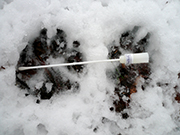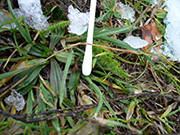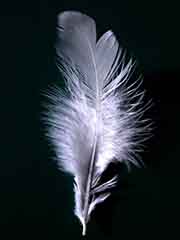• Scats: can contain a small quantity of DNA more or less degraded, but often give good results, in particular in carnivores. Small portions of the scat (few cm3) can be deposited in hermetically closed tubes filled with ethanol 90% (samples must be completely covered). Store the tubes at room temperature, or in the fridge. Alternatively, scats can be dried and stored in tubes filled with a dessicant (silicagel).
• Hair and feathers: the DNA is only present in the root bulb! Hair and feathers must be stored dry in paper envelopes. For the procedure needed for bird DNA sexing, see here.
• Saliva: must be collected by swabbing with a Q-tip, for example inside the cheek of an animal or around bite wounds on a prey. Allow the Q-tip to dry at room temperature and store dry in a paper envelope.
• Tissues: tissue fragments (muscle, liver, skin), meat, fish fins, biopsies contain a high quantity of DNA, but their degradation is rapid at room temperature. Store few mm3 in 1.5 ml tubes and completely cover with ethanol 70%. Store at room temperature or in the fridge. Alternatively, thin samples can be dried and stored in tubes filled with a dessicant (silicagel).
• Blood and fluids: can be collected by swabbing with a Q-tip. Allow it to dry and store dry in a paper envelope.
• Urine: often gives good results (contact us for collection procedure).
• Plant material: put a fragment (for example, few cm3 of a leaf) in a tube filled with dessicant (silicagel).
• Other samples: our laboratory also performs genetic analyses with other types of biological samples, such as bones, antlers, egg shells, museum samples, and with samples found on various supports (such as dried blood spots on textiles, blood spots on knife, etc.).



